

The movie '12 Strong' is based upon the book 'Horse Soldiers' by Doug Stanton. The story follows the deployment of ODA (Operational Detachment Alpha) 595 under the 5th Special Forces Group (Airborne) who were inserted into Afghanistan weeks after the September 11th attacks. Their role was to work with local Afghanistan leaders and indigenous forces, to create a fighting force to combat the Taliban and Al-Qaeda.
The book follows their struggles on task dealing with; the environment, equipment failure, engagement with local fighters, differing views of conflict, politics at home and abroad and ultimately highlighting the sacrifice they each made by stepping forward to put themselves on the line as some of the first men on the ground in Afghanistan.
Whilst the movie is a dramatisation of the book with fictional characters and scenarios created, it does attempt to shine a light on the immediate response of the US swinging it's full might and weight to a new conflict, one that would continue for many years to come. The armourers and props personnel for the movie have spent time and effort researching kit and equipment used in the 2001 time period and having sourced original and reproduction kit, they've been able to reproduce what some of those in ODA 595 would likely have been deployed with.
The purpose of this blog for me was to identify and collate all of the different parts used on the rifles used by the members of ODA 595 for those who wished to replicate a specific rifle build or for those who want to take inspiration from the builds.
The rifles used by ODA 595 in 12 Strong reflect the available weapons and ancillaries in use by Special Forces at the time of 2001 and the multiple ancillaries and manufacturers used are true to the time period reflecting authenticity and an attention to detail. This blog will cover the M4A1 SOPMOD Block I and the M24A1.
M4A1 SOPMOD Block I
Key facts
The M4A1 is a popular, recognisable and mass manufactured weapon platform in use across the globe. Heralding from 1982 it has undergone numerous upgrades, evolving into the platform that we see today. A constant requirement to update the rifle based upon; feedback, user testing, operational requirements and operating environments etc. has ensured that it remains adaptable, cost effective, easy to source parts for and shows that with all of this work, it remains the primary weapons platform across the US military.
Designed - 1982
Weight - 3.52 kg (with loaded magazine)
Length - 33" (stock extended)
Cartridge - 5.56x45mm (NATO)
Range - 500m

Why the M4A1?
The M4 SOPMOD (Special Operations Peculiar Modification) enables operators to adapt the M4 rifle to a chosen environment utilising a number of attachments, namely; optics, firearm add-ons (shotgun and under barrel grenade launcher), laser aiming modules, suppressors etc. Whilst this adaptability is not unique to the SOPMOD, the rifle variant in itself is unique. The SOPMOD dates back in it's earliest form to 1989 and over the years progressively improved on itself to provide armed forces with an adaptable and reliable weapon.
SOPMOD BLOCK I - (Plus Platform Mods and Phased Replacements)
USSOCOM (United States Special Operations Command) developed the Special Operations Peculiar Modification (SOPMOD) Block I kit for the M4 carbines. The kit as pictured below features; a Rail Interface System (RIS) handguard developed by Knight’s Armament Company (KAC), a short M203 grenade launcher, a KAC suppressor, a KAC rear flip-up sight, crane stock, an Insight Technologies AN/PEQ-2A visible laser/infrared designator, a Trijicon ACOG and Reflex sights, and a night vision sight. With a large number of readily available accessories, this adaptable rifle quickly came into use by US special forces.

This section provides a breakdown of the rifles identifying; ancillaries, manufacturers and providing several reference pictures.
BARREL / RAIL SECTION
This section covers the ancillaries that were attached to the rifles' barrels and rails. Each individual within the team had a specific role and some of the ancillaries used were role specific.
The KAC NT4 suppressor was included within the SOMOD Block 1 and was seen mainly utilised by Chief Warrant Officer SPENCER (Assistant Team Lead).
The Colt RIS and KAC RAS did not have a built in sling attachment point. The 'Colt front sling side swivel mount' pictured in image one, was an intermediary element used to clamp onto the barrel underneath the front sight. The mount was affixed in place using two metal rods with an element of rotation to reduce the likelihood that the fitted sling causes any damage to the rifle as shown in the second image below. The third image highlights the mount fitted to Captain NELSONS rifle.
Colt M4 SOCOM RIS / Knights Armament KAC M4 RAS
The Colt M4A1 traditionally was shipped with the Colt M4 SOCOM RIS as shown in the first image below. KAC soon developed their own version weighing slightly less than the Colt version and the KAC version did later appear on weapons post 2001. Their similarities and adaptability ensured that whichever was chosen was mission ready.
The team do utilise the Colt M203 Grenade Launcher (Long) which is seen as a force multiplier and used to suppress the advancing enemy with HE (High Explosive) grenades.
To enable the M203 to be mounted, a QD Mount was required to attach the M203 to the fore end of the barrel. The KAC Mount was issued as a part of the SOPMOD Block 1 kit.
Surefire 6P
The Surefire 6P in its original form is no longer manufactured. The Surefire 6P early model variant is identified by the smooth cylindrical body instead of the later variants that feature a hatched grip textured body. The torch is powered by 2x CR123 batteries with an output of 65 lumens and can reach up to distances of 45m. The team mount the Surefire predominantly on the underside of the rail or the right hand side.
The M10 was a low profile mount enabling the Surefire 6P to be mounted securely on the M4A1 SOPMOD. Consisting of 6 parts; thumb screw, rail pin, lower rail attachment section, ring cap and 2x screws it was a simplistic item stamped with 'WEAVER 1" - USA". The second and third images below show the mounts identifiable shape, thumbscrew and 2x screws clearly visible.
The KAC grip was one element included as part of the original SOPMOD Block 1 kit. Manufactured from high grade polymer and able to fit on any MIL-STD-1913 rail, its purpose was to aid in enabling a reactive shooting posture from the operator. The second and third images show the grip fitted and in the second image when zoomed in, the KAC stamping trademarks can be seen on the rear of the grip.
The AN/PEQ-2 (Infrared Target Pointer/Illuminator/Aiming Light (ITPIAL)) is seen fitted to all of the teams' rifles. The system designed by Insight Technology, consists of one infrared laser and one infrared illuminator. It was designed to be used as a target pointer (designator) and wide area illumination for rifles in low light or darkness only visible using a Night Vision Device.
RECEIVER - OPTICS & ANCILLARIES
This section covers the optics and ancillaries that were attached to the rifles. Role and personal choice saw the team using different methods, each to their own advantages.
The ACOG is one of the most recognisable rifle sights utilised by forces across the globe. The standard TA01 was designed and manufactured for SOCOM and provides the operator a clear sight picture with large reticle and backup sights situated at the rear of the sight. The majority of the team utilise the ACOG on their rifles.
Aimpoint CompM2 / ECOS-N
A couple of the team in the movie utilise the Aimpoint CompM2 which is near enough identical to the ECOS-N variant which was issued as a part of the SOPMOD Block 1 ancillaries.
Aimpoint QRP Mount (Gen1)
The Aimpoint CompM2 is mounted using the Aimpoint QRP Mount (Gen1). The first image below shows the key identifier in that the older gen mount had a longer thumbscrew protruding from the mount body, whereas with the later gens, the thumbscrew is smaller and closer to the mount itself. The second image shows highlighted in red the two hex bolts and in green, the protruding thumbscrew. The third image shows highlighted in red a riser / spacer that has been included to ensure that the sight is raised high enough for use in conjunction with an M4 platform. Highlighted in green in the third image also is the rear right hand side of the QRP which has the thumbscrew pin visible.
The carry handle is manufactured using a mixture of steel and aluminium parts and whilst designed to be used as a method to carry the rifle, it also enables an optic to be affixed to the top of the handle. Only one of the team is seen using the carry handle in situ.
The team all utilise the standard 30 round Colt magazine with their rifles.
REAR
This section covers the rear of the rifle and the accessories that were seen fitted.
The M4A1 originally came with a simplistic collapsible stock. Over time this has evolved and there are multiple stocks available for the M4A1. The team utilise the early version of the CAR-15 stock which is used differently depending on which sling is used. Those using the USGI Silent Sling (image two) are able to thread the rear of the sling through the cut outs in the stock. Those using the Condor T3PS (image three) tie paracord through the cut outs and then attach the sling via one of the sling attachments to the paracord.
Condor Tactical 3 Point Sling (T3PS)
The team appear to favour the T3PS enabling them to carry the weapon in a low stance and change to a high stance if required. The T3PS is identifiable by the quick release buckle highlighted in the second and third images.
A number of the team appear to favour the old gen USGI Silent Sling, which simply comprises of two steel rectangular buckles and the strengthened nylon sling itself. The sling is designed to fit onto any 1 1/4" swivel mount.
M24A1
Key facts
ODA 595 also had embedded in their team a Marksman operating with the M24A1. This rifle is the military version of the Remington 700 rifle with US Army designating it as the 'M24' after it was adopted as their main sniper platform. This rifle effectively enabled the team to be able to hit targets further downrange than their M4A1s would allow. The M24 is no longer the main rifle used as a sniper platform by the US military, with older models being upgraded and now being replaced by KACs M110.
Designed - 1988
Weight - 7.3 kg (with scope, bipod, magazine, sling)
Length - 43"
Cartridge - 7.62x51mm (NATO)
Range - 800m

Why the M24A!?
The M24A1 enables operators to hit targets close to 800m+ in good conditions and is usable in nearly all environments thanks in part to it's bolt simplicity. The platform is able to be configured to accept a number of attachments, namely; optics, bipods and laser aiming modules.
This section provides a breakdown of the rifle identifying; ancillaries, manufacturers and providing several reference pictures.
Leupold Mark 4 Tactical 3.5-10x40 LR/T M1 Rifle Scope
The rifle is fitted with a Leupold Mk4 scope that was the standard scope utilised by deployed forces. The Mk4 Tactical was used from 1998 onwards with the M24A1. It has now though been superseded by numerous other Leupold scopes. Measuring at 13.5" and weighing 553g it enabled the operator to move from 3.5x magnification up to 10x magnification. The second image below shows the reticle. The third image shows in film the Mk4 Tactical scope being used for cross reference with the first image. Several parts have been highlighted; in red is clearly visible the Leupold trademark, in green are the three adjustment dials, and highlighted in blue is the focus adjustment as seen at the rear of the scope in the first image.
The Mk4 Tactical scope is attached to the rifle via the Leupold Mk4 mounting rings which are the 'high variant' to provide enough clearance between rifle and scope. Highlighted in the third image is a rail retaining pin matching the Mk4 mounting ring as seen in the first image.
In addition to the scope, the rifle is further fitted with a Harris 9-13" bipod. The M24A1 was originally shipped on deployment with a Harris 9–13" 1A2-L or Harris 9–13" 1A2-LM bipod, the noticeable difference being with the 1A2-L (image one), the legs are smooth, whereas with the 1A2-LM (image two), the legs have notches to allow finer click adjustments to the length of the bipod legs. Unfortunately in the movie, the bipod legs are never extended beyond their smallest size so the variant can't at this time be specifically identified.
M1 Garand Sling
The M24A1 is also used in conjunction with a leather M1 Garand sling.
Thoughts and opinion
12 Strong is a movie that brings to life some of the stories and struggles that the men of ODA 595 initially faced and how they paved the way for the years to come. The attention to detail, certainly is of benefit to those watching showing era correct kit, equipment and rifles which adds to the uniqueness of it all. The real treasure though lies within the Horse Soldiers book, where there is a huge amount of additional detail surrounding lives, tactics and ultimately parts of the story that 12 Strong never showed. I highly recommend reading the book to get that additional insight.
Weapons and their component parts are a large part of HAHO hence why this blog has been created, to help those wanting to identify the kit and equipment used and further helping them on their path to gaining knowledge and providing a steer on equipment.
Whilst the majority of kit and equipment featured in this blog are available, some items are rare / sought after that will take time, money and effort to locate, although it will likely be worth it in the end. The era kit as well used within the film was a break from todays modern warfighter role and equipment where the rifle has multiple attachments and inter-linked technologies. Back in 2001, the men grabbed their kit and equipment off the racks and at the time it was the best that the US military had to offer. Evolution is a wonderful thing.
Watch this space for a 12 Strong rifle build coming soon...
Don't forget to check out the HAHO social media platforms below for content, updates and linked articles. Like, Follow, Subscribe and Share!
Final Note
I am not paid for my blogs by the manufacturers or companies that I purchase my items from. I am not offered freebies to promote a product. These blogs are purely written from my own experience in truth to help advise and inform others who may wish to purchase the items or understand more about them. If I am sent a freebie to review this will be stated at the beginning to make you aware.



















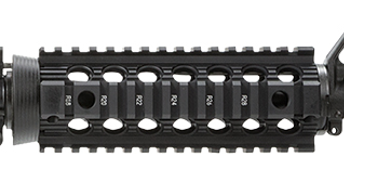





















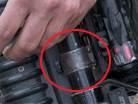






















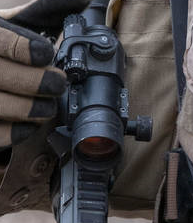


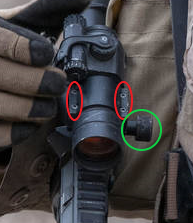










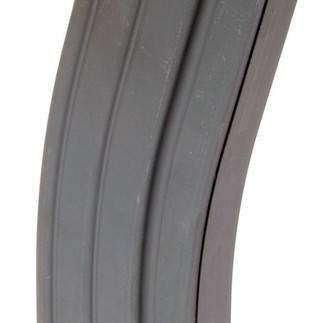






















































Commentaires